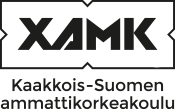Process engineering (5 cr)
Code: EN00BH70-3001
General information
Enrollment
15.08.2019 - 30.08.2019
Timing
26.08.2019 - 20.12.2019
Number of ECTS credits allocated
5 op
Virtual portion
4 op
Mode of delivery
20 % Contact teaching, 80 % Distance learning
Campus
Kotka Campus
Teaching languages
- Finnish
Seats
0 - 25
Degree programmes
- Degree Programme in Energy Engineering
Teachers
- Merja Mäkelä
- Kalle Tarhonen
Teacher in charge
Kalle Tarhonen
Groups
-
ENKT17SM
Objective
After completing this course, you will be able to
• describe the significance of process design in process integration
• present main processes and machinery of process industries
• work out the dimensioning of process machinery and compute steady states
• define dynamic flow, heat and mass balances for simulations
• identify authority obligations in process design.
Content
How are you able to design processes by taking into account technical, economic, safety-related and environment-related aspects?
What kinds of machines are used in processes and how do they work?
How do you compute the capacity of a process and its steady state?
How do you create a dynamic process model and make a simulation program?
Which processes need authority obligations?
Location and time
After completing this course, you will be able to
- describe the role of process design in process integration
- present main processes and machinery of process industries
- work out the dimensioning of process machinery and compute steady states
- define dynamic flow, heat and mass balances for simulations
- identify authority obligations in process design.
How are you able to design processes by taking into account technical, economic, safety-related and environment-related aspects?
What kinds of machines are used in processes and how are they working?
How do you compute the capacity of a process and compute its steady state?
How do you come to a dynamic process model and make a simulation program?
Which processes do need authority obligations?
Teaching methods
Scheduled track:
-
Independent track:
As a project designer a portfolio
Blended track:
After completing this course, you will be able to
- describe the role of process design in process integration
- present main processes and machinery of process industries
- work out the dimensioning of process machinery and compute steady states
- define dynamic flow, heat and mass balances for simulations
- identify authority obligations in process design.
How are you able to design processes by taking into account technical, economic, safety-related and environment-related aspects?
What kinds of machines are used in processes and how are they working?
How do you compute the capacity of a process and compute its steady state?
How do you come to a dynamic process model and make a simulation program?
Which processes do need authority obligations?
Exam schedules
Exam 11.1.2020, additional exams in February and May, 2020.
Resit exam 6.2.2020, klo 16.30-19, B3006.
Completion alternatives
As a project designer a portfolio
Student workload
xx h lectures
xx h supervised design and simulation exercises
Further information
Prerequisite courses are:
Energy Engineering Mathematics 2
Technical visualisation and CAD
Statics and strength of materials
Thermodynamics and heat transfer.
Evaluation scale
1-5
Assessment methods and criteria
Exam, with grades 0-5
